What to do when you have loose dentures The following will help you understand the causes of loose dentures and how to fix them. Let’s find out together!
What are loose dentures? Common denture methods on the market
First of all, you need to understand what dentures are. Dentures are teeth used to replace missing teeth, and different types of dentures can replace all teeth, gums, and tissues surrounding the tooth position.
Due to the effects of tooth decay, trauma, etc., dentures are needed to help with tooth loss.
Tooth loss directly affects facial muscles, causing sagging, facial asymmetry, and an inability to perform daily functions such as chewing and communication. Therefore, making dentures is the most optimal solution today.
There are currently 3 common denture methods on the market. Removable dentures and fixed dentures include dental bridges and dental implants.
In reality, there are quite a few cases where dentures become loose, open, slip, or have black edges after getting dentures. This causes a lot of concern for customers, so what are the causes of these phenomena? Are they really dangerous? Below are some reasons for issues such as loose dentures, slippage, and black edges in dentures.
Causes of loose dentures, slippage, and black edges
Causes of loose dentures
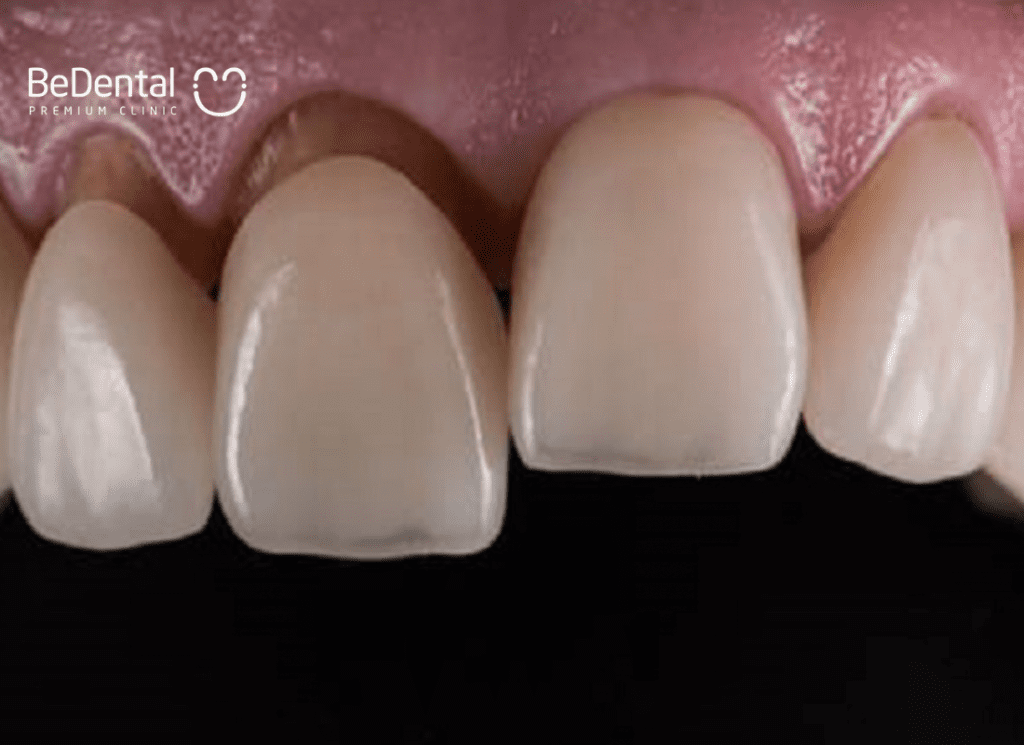
There are many causes of loose dentures, and the specific causes may vary depending on the different denture methods. However, there are some main causes:
– Improper oral hygiene leads to plaque and food residue accumulating on the teeth. Over time, bacteria can grow and attack the tooth roots, causing the teeth to weaken and resulting in loose dentures.
– Prior to getting dentures, patients have not been thoroughly examined and treated for dental problems such as tooth decay, gum inflammation, pulpitis, periodontitis, etc. This can lead to more severe inflammation after getting dentures, causing them to become loose or slip.
– Inadequate dental skills of the dentist can result in calculation errors, improper denture fitting, and inaccurate adjustments, leading to loose dentures.
Additionally, there are other causes depending on the specific methods:
– For dental bridges:
+ Making dental bridges requires grinding at least 2 teeth to act as supports for the missing tooth. If oral hygiene is not maintained properly, bacteria can inadvertently attach and directly attack the real tooth roots. This can cause inflammation, weakening the real teeth and affecting the dental bridge.
+ The dentist has not treated dental problems such as tooth decay, pulpitis, periodontitis, etc. before placing the dental bridge.
+ Saliva and acid from external food can damage the dental cement that holds the ceramic crown and the real tooth root, causing the dental bridge to become loose.
+ The process of placing the ceramic crown is not performed carefully, meticulously, and accurately, resulting in the ceramic crown not fitting tightly against the real tooth root, creating gaps between the two layers of teeth and causing the denture to become loose.
– For dental implants:
Implant placement is the most advanced method of tooth replacement today. This method is complex and takes a long time, ranging from 3-6 months, or even up to 9 months.
Therefore, it requires a dentist with good technique and extensive experience to ensure the most accurate execution of all parameters. Conversely, if you undergo implant placement at a low-quality dental clinic or with an inexperienced dentist, after a few years, the implants may become loose. The causes can include:
+ Incorrect occlusion adjustment, improper implant placement, causing the screws connecting the implant post and the abutment joint to become loose or broken, resulting in misalignment during chewing.
+ Improper implant placement according to the proportions and sizes, with the implant post being too small compared to the jawbone. When exposed to significant chewing forces, the implant post may break.
Causes of denture slippage in denture positions
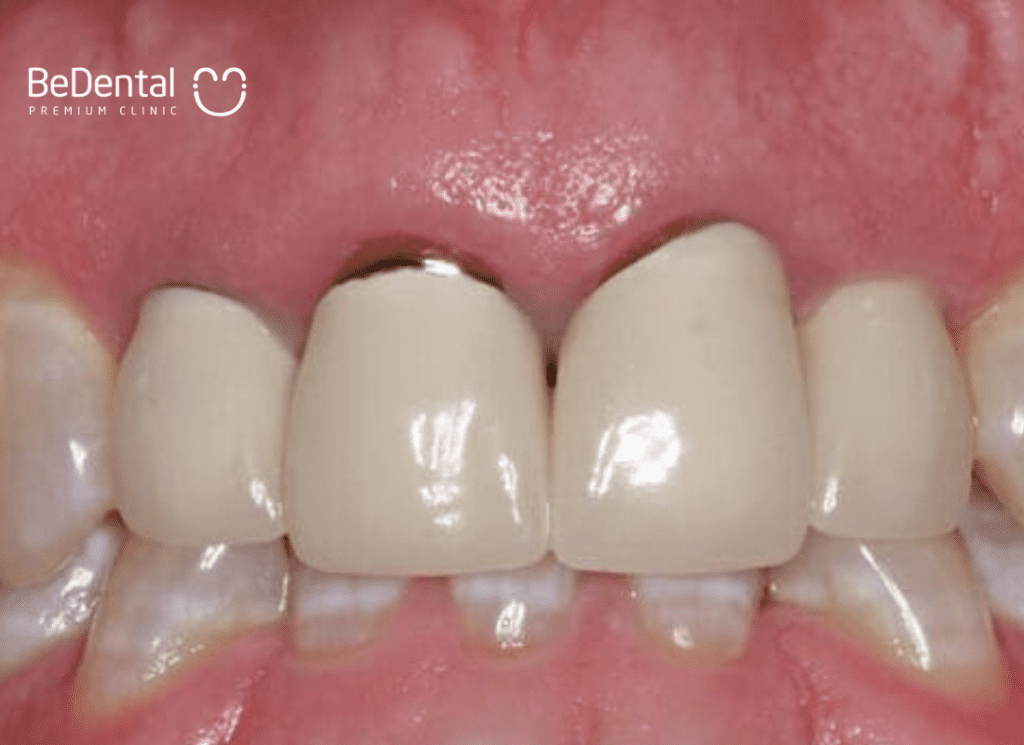
– Inaccurate execution technique: When the ceramic crown is placed on the abutment, if it does not fit tightly and there are gaps or spaces, it creates conditions for food residue to accumulate and makes it difficult to clean. Over time, plaque can form and affect the gum line, leading to denture slippage.
– Use of rudimentary equipment: The process of taking dental impressions and designing ceramic crowns must ensure absolute accuracy. Therefore, dental tools must be modern to avoid errors. If the process of taking impressions and designing the crown is not accurate, does not match the size of the abutment, or does not fit the gum line, it can cause denture slippage.
– Lack of experience of the dentist: The dentist may overlook the importance of examining the patient’s oral condition before placing the ceramic crown. In cases where the patient has dental problems such as tooth decay or gum inflammation, if not treated in a timely manner, it can lead to gum recession when placing the crown.
– Home oral care: Brushing too forcefully or using a hard toothbrush can create friction on the ceramic crown, causing gaps. Or if you do not have a proper oral care routine, bacteria can easily penetrate the gaps between the teeth, causing gum recession and exposing the inner part of the abutment.
Causes of black edges on the gums with dentures.
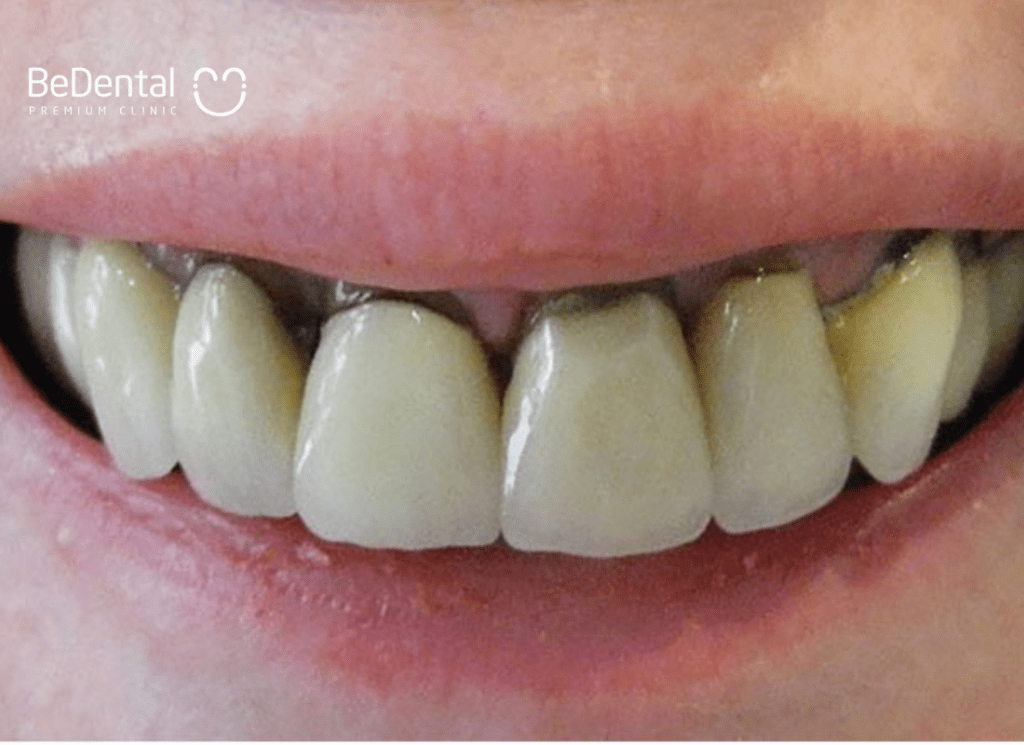
– Oxidized metal-ceramic crowns:
The condition of black gumline around metal-ceramic crowns occurs mostly in customers with this type of crown. The crowns, made of metal material, undergo oxidation over time due to saliva and acids from food. Improper oral hygiene allows food debris to accumulate, forming plaque that causes gum recession and exposes the base of the crown, resulting in black gumline.
– Skill of the dentist:
Similar to other issues like loose or receding dentures, the skill of the dentist directly affects the quality of the crowns in the long run. If the crowns are not properly fitted, with improper height or excessive pressure on the gum, they become nutrient-deficient and darken.
– Exposed crown margins:
Furthermore, after a period of wearing aesthetic crowns, exposed crown margins can occur due to expansion and contraction of the crown material. This inadvertently creates conditions for food or beverages to seep in, leading to gum inflammation, bad breath, gum darkening, or even tooth decay.
In cases where the exposed tooth structure is over 0.5 mm, it is necessary to replace the crowns to ensure effectiveness.
What to do when you have loose dentures?
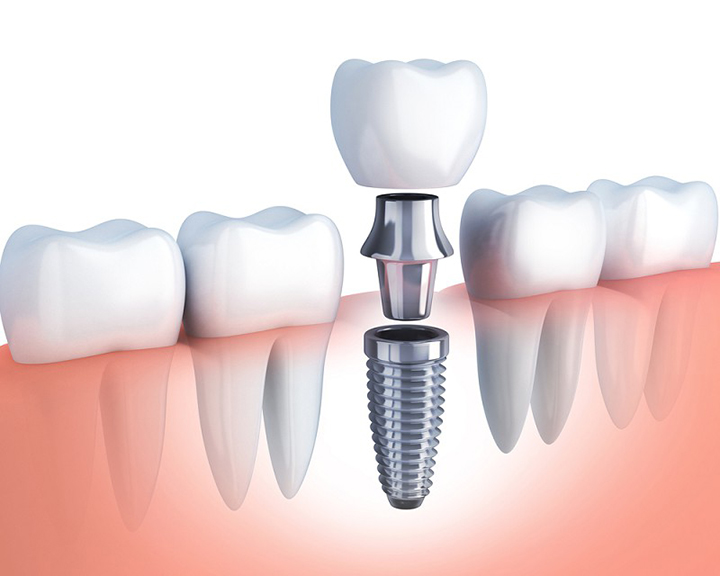
– For cases of making ceramic dental bridges:
+ If the denture is loose due to the dental cement layer being damaged, it is recommended to visit the dental clinic to reattach the denture with a new layer of adhesive or replace it with a new denture.
+ Making dental bridges will require grinding at least two adjacent teeth, which can weaken the natural teeth. Therefore, you should consider the Implant method to avoid affecting soft tissues and other teeth.
– For cases of dental implant placement:
Dental implant placement is the most advanced method of restoring missing teeth because implants can completely overcome the disadvantages of removable dentures and dental bridges. However, it is important to find reputable and high-quality dental clinics to avoid cases of miscalculations leading to implant fracture, dental infections, etc.
Addressing the issue of denture slippage at the position of the denture
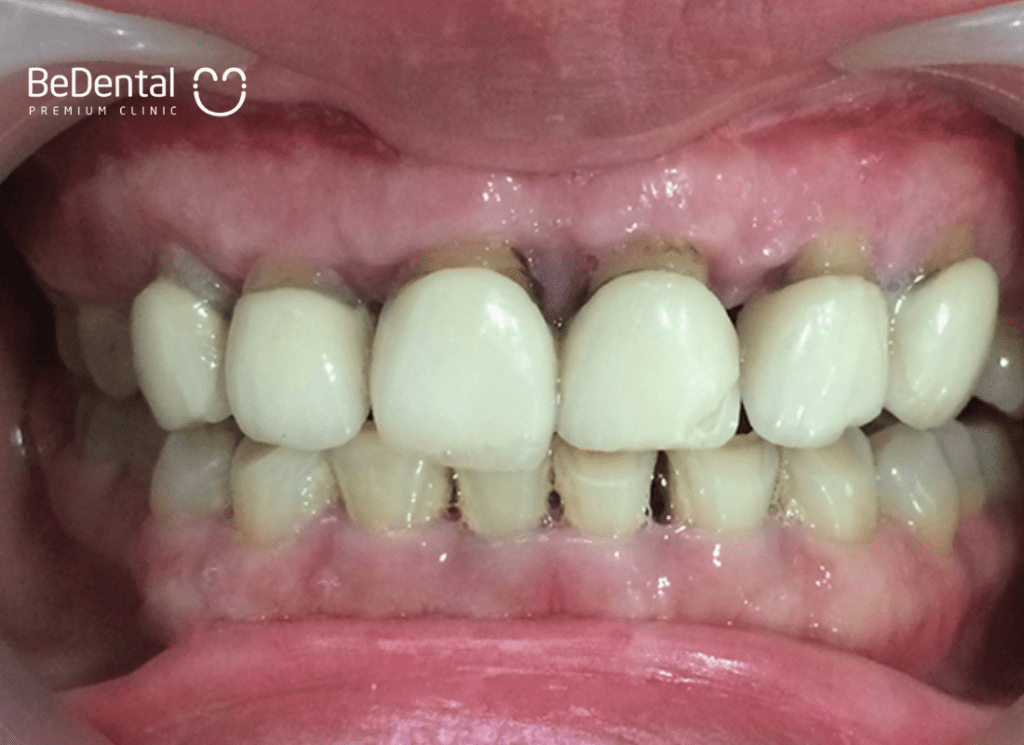
– If denture slippage occurs due to improper technique in creating the ceramic crown, where the crown does not fit tightly with the tooth, the dentist will remove the crown, clean the tooth, take a new impression, and design a new crown that matches in color, size, and fits perfectly with the tooth.
– If the ceramic crown is loose due to dental conditions such as tooth decay, periodontitis, or gum inflammation, the dentist will remove the crown to treat these conditions thoroughly before either reattaching the old crown or creating a new one with better accuracy.
For both of these cases, it is important to research the quality of dental clinics in the market to find the most reputable and high-quality addresses to address the issue of denture slippage. This is to prevent similar situations in the future.
– Switching from a hard-bristled toothbrush to a soft-bristled one, avoiding excessive brushing pressure on the gums. Using dental floss and mouthwash to ensure the safety of the denture.
Addressing the issue of black edges appearing near the gums with dentures:
The appearance of black edges near the gums with dentures is caused by oxidation of metal-based ceramic crowns. Therefore, you only need to replace them with a different type of crown. Currently, there are many high-quality all-ceramic dentures available that offer high aesthetics and ensure safety, avoiding the issue of black edges near the gums.
Be dental – A reputable dental clinic address currently.

| List | Time | Unit | Price |
|---|---|---|---|
| 1.Removable Denture (More detail...) | |||
| Conventional Denture (More detail...) | 2 days | 1 jaw | 4.000.000 ~ 157$ |
| Flexible acrylic partial denture | 2 days | 1 jaw | 5.500.000 ~ 216$ |
| Cast metal partial denture | 2 days | 1 jaw | 4.500.000 ~ 177$ |
| Titanium partial denture | 2 days | 1 jaw | 6.000.000 ~ 236$ |
| 2. False teeth (More detail...) | 2 days | ||
| Acrylic resin teeth -made in Vietnam | 3 days | 1 unit | 350.000 ~ 14$ |
| Acrylic resin teeth -made in USA | 2 days | 1 unit | 600.000 ~ 24$ |
| Porcelain teeth backed with metal | 2 days | 1 unit | 1.800.000 ~ 71$ |
| Denture occlusion | 2 days | 1 unit | 1.000.000 ~ 39$ |
| 3. Non-removable denture : | |||
| Porcelain teeth backed with metal (More detail...) | |||
| Porcelain teeth backed with metal (Ni,Cr) | 3 days | 1 unit | 1.800.000 ~ 71$ |
| Porcelain teeth backed with metal Vivadent France (Cr,Co) | 3 days | 1 unit | 1.800.000 ~ 71$ |
| Porcelain teeth backed with metal Jelenko USD (Cr,Co) | 3 days | 1 unit | 2.000.000 ~ 79$ |
| Porcelain teeth backed with titanium | 3 days | 1 unit | 3.500.000 ~ 138$ |
| Non-metal Teeth : (More detail) | |||
| Porcelain Veneer Katana from Japan | 3 days | 1 unit | 3.500.000 ~ 138$ |
| Porcelain Veneer Venus from Germany ( (7 years Warantee) (Tìm hiểu thêm...) | 3 days | 1 unit | 4.000.000 ~ 157$ |
| Porcelain Veneer Roland from Germany ( 10 years Warantee) (More detail...) | 3 days | 1 unit | 4.800.000 ~ 189$ |
| Porcelain Veneer Roland HD from Germany (10 years warantee) (More detail...) | 3 days | 1 unit | 5.900.000 ~ 232$ |
| Porcelain Veneer Ceramil from Germany (10 years warantee)(More detail...) | 3 days | 1 unit | 6.000.000 ~ 236$ |
| Porcelain Crown Emax from Germany ( 15 years warantee) | 3 days | 1 unit | 7.000.000 ~ 275$ |
| Porcelain Veneer Htsmile from Germany(Bảo hành 15 năm) (More detail...) | 3 days | 1 unit | 7.000.000 ~ 275$ |
| Porcelain Veneer Emax press from Germany (15 years warantee) (More detail...) | 3 days | 1 unit | 9.000.000 ~ 354$ |
| Porcelain Veneer Cercon from Germany (15 years Warantee) (More detail...) | 3 days | 1 unit | 7.000.000 ~ 275$ |
| Porcelain Veneer Nacera from Germany ( 10 years warantee) | 3 days | 1 unit | 10.000.000 ~ 393$ |
| Porcelain Veneer Lava 3M Plus from USA ( 15 years warentee) (More detail...) | 3 days | 1 unit | 9.000.000 ~ 354$ |
| Porcelain Veneer 3M Lava Esthetic from USA (15 years warantee) | 3 days | 1 unit | 12.000.000 ~ 472$ |
| Porcelain Veneer Lisi from Japan (15 years warentee) (More detail...) | 3 days | 1 unit | 12.000.000 ~ 472$ |
| Porcelain Veneer Diamond from USA (lifetime warantee) | 3 days | 1 unit | 16.000.000 ~ 629$ |
Tư vấn chuyên môn bài viết:
BÁC SĨ ĐÀM TRỌNG HIẾU
BEDENTAL - TOP STANDARD DENTISTRY SYSTEM
In HANOI
Address 1: 7B Thi Sach St, Ngo Thi Nham, Hai Ba Trung Dist, Ha Noi. - 0934.61.9090
Address 2: No 129 Hoang Ngan, Yen Hoa, Cau Giay Dist, Ha Noi. - 0934.61.9090
In HO CHI MINH
Address 1: 53 -55 -57 Pho Duc Chinh St, Nguyen Thai Binh, Dist. 1, Ho Chi Minh. - 0766.00.8080
Working: 9am - 8pm everyday
Website: https://bedental.vn/en/
PLEASE LEAVE YOUR INFORMATION IF YOU WANT FURTHER DENTAL CONSULTATION






Pingback: What is the purpose of orthodontic elastics? Classification and some ways to replace orthodontic elastics – Be Dental